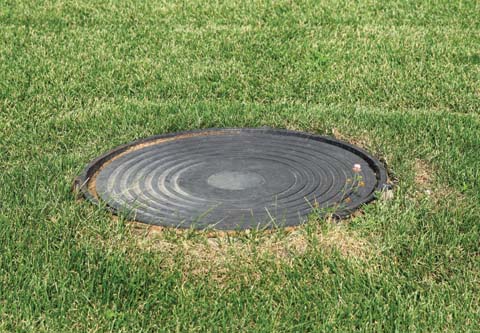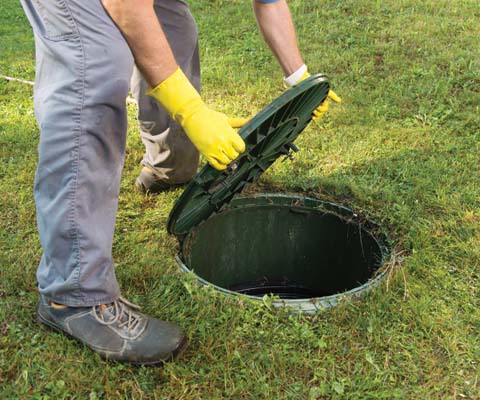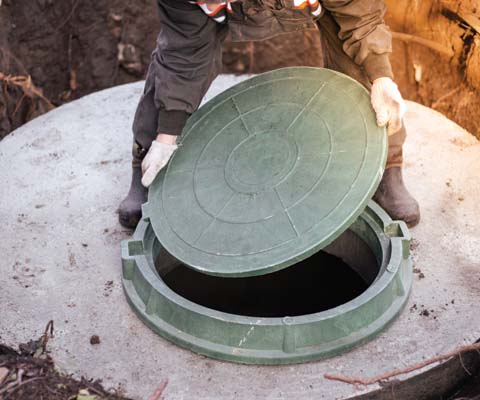Septic System Plumbing Sunbury
Local Plumbers For Septic Tank Services



In rural parts of Australia, septic systems play a crucial role in the infrastructure of many homes and properties, especially in areas where conventional sewer systems may not be available. Understanding the intricacies of septic system plumbing is essential for homeowners to maintain proper functionality and avoid costly repairs. Maintaining a functional septic system is pivotal for wastewater management of those living further out.
Our septic system plumbing services are designed to ensure that all aspects of your septic system are operating efficiently, effectively reducing the risk of costly repairs and health hazards associated with septic failure. You can contact us septic plumbing services or keep reading to see what our plumbers can do for you.
Septic System Repairs
Any issues you have within your septic system, we can investigate, diagnose and repair it.
Septic Tank Installations
All new septic tank installations, our team offers a comprehensive assessment, design and install.
Sunbury Septic Tank Services
For a septic tank plumber in Gisborne or Sunbury, some services we offer include:
What is a Septic System?
A septic system is an underground wastewater treatment solution that processes and disposes of household sewage. It consists of a septic tank, a drain field, and a series of interconnected pipes. Wastewater from toilets, sinks, and other plumbing fixtures flows into the septic tank, where solids settle at the bottom and are broken down by bacteria, while the lighter substances, such as grease and oils, float to the top. The partially treated liquid effluent is then slowly released into the drain field for further filtration and absorption into the ground.
Our Septic Tank Installation Services
Installing a septic system is a complex process that requires thorough planning, adherence to local regulations, and proper execution. Our team provides professional installation services, ensuring that your septic system is optimally sized and positioned for your specific property. This includes assessing the soil conditions, designing an effective layout, and installing the necessary components.
Consultation and Assessment
The first step in our septic tank installation services is a thorough consultation and assessment of your property. Each property is unique, and various factors influence the type and size of septic system that will be most effective. Our team will evaluate your lot size, soil conditions, and household wastewater needs to identify the ideal system for your property.
Additionally, we’ll review local regulations and zoning laws to ensure compliance and avoid any potential issues down the line.
Choosing the Right Septic System
Once we have assessed your situation, we will guide you in selecting the right septic system for your home. There are several types of septic systems, including conventional, alternative, and aerobic treatment units. Our knowledgeable staff will explain the advantages and disadvantages of each type, helping you make an informed decision that fits your budget and environmental considerations. Factors such as property size, location, and water usage patterns will be taken into account to ensure optimal performance and longevity.
Design and Permitting
After you’ve chosen the right system, our team will design a customised septic system layout. We will create a detailed plan that outlines the tank size, drain field dimensions, and any additional components required for safe operation. This design will also take into consideration any local environmental guidelines to protect waterways and ensure public health. We’ll handle all necessary permits, liaising with local authorities to expedite the approval process and ensure full compliance with regulations.
Septic System Installation Process
The installation of a septic tank is not a do-it-yourself project. We are equipped with the skills and tools needed to install your septic system efficiently and without disruption to your property. The installation process typically involves the following steps:
Excavation: Depending on the size and type of the septic system, we will excavate a trench in your yard to accommodate the septic tank and leach field. Our team uses heavy machinery, ensuring the site is cleared quickly and safely.
Tank Placement: We will carefully position the septic tank in the predetermined location, ensuring it is level and securely in place. Proper positioning is vital to the system’s functionality and longevity.
Connecting Inlet and Outlet Pipes: Once the tank is in place, we will connect the inlet pipe from your home to the tank and the outlet pipe leading to the drain field. We ensure that all connections are airtight and leak-proof.
Leach Field Installation: The leach field is a critical component of the septic system. We will install perforated piping within the gravel bed so that treated effluent can safely disperse into the soil. This stage requires careful calculation of the appropriate depth and spacing to ensure effective absorption.
Filling and Compacting: After all components are connected, we will fill in the excavated areas with soil, compacting it to prevent settling and maintain the integrity of your yard.
Final Inspection: Once installation is complete, a final inspection will be conducted to ensure everything meets both our quality standards and local regulations. We also provide guidance on the maintenance and care to ensure the longevity of your new septic system.
By using high-quality materials, efficient designs, and waste-reducing practices, we help protect groundwater and local ecosystems. Let us help you create a healthier, more sustainable living environment through our dedicated septic installation services.
Septic Tank Repair Services
In the unfortunate event of a septic system failure, our team is ready to assist with prompt and reliable repair services. Symptoms of a failing septic system can include slow drains, unpleasant odours, and pooling water above the drain field. Our skilled plumbers will diagnose the issue, whether it be a damaged tank, clogged pipes, or a compromised drain field, and provide effective repair solutions to restore your system to full functionality.
Septic Tank Maintenance And Replacement
Regular maintenance is key to prolonging the life of your septic system. We offer comprehensive maintenance services, including tank pumping, inspections, and cleaning. By scheduling routine pump-outs, we can help prevent clogs and backups, which can lead to significant issues if left unchecked. Our inspections also allow us to identify any potential problems early, saving you time and money in the long run.
When a septic system reaches the end of its lifespan or becomes irreparable, a replacement is necessary. We guide you through the replacement process, from assessing your existing system to installing a modern, efficient septic system that meets current regulations. Septic systems, when functioning correctly, offer an eco-friendly waste management solution. However, poor maintenance can lead to contamination of local water supplies, potentially causing health risks to both people and wildlife.
Regular inspections and pumping services will help prevent problems before they arise, saving you time and money in the long run. Should any issues occur, we are only a call away, ready to help when you need.
Contact Us For Septic Tank Plumbing Services
Whether you require installation, maintenance, repairs, or replacements, our team is equipped with the skills and knowledge to handle all aspects of septic system management. Contact us to protect your property and provide peace of mind, knowing that your septic system is in capable hands.
How Do Septic Systems Work?
The basic function of a septic system revolves around gravitational flow. When wastewater enters the septic tank, it undergoes primary treatment, where solids settle and anaerobic bacteria begin to digest waste. This process reduces the volume of solids, creating a sludge layer at the bottom of the tank. The liquid effluent that rises to the top is then discharged through an outlet pipe into the drain field, often referred to as the leach field. The drain field is a series of perforated pipes buried in gravel that allow the effluent to percolate into the surrounding soil. Here, it experiences further treatment as soil microorganisms break down harmful pathogens and nutrients, ensuring that the water re-enters the groundwater supply cleanly.
Common Issues with Septic Systems
Despite diligent care, septic systems can encounter several common issues, each needing to be addressed:
Drain Field Failure: Over time, drain fields can become saturated or clogged due to excessive water flow, soil compaction, or root intrusion from nearby trees. This can lead to backups and a failure to properly treat wastewater.
Septic Tank Issues: Tanks can develop leaks, cracks, or structural damage over time. If the tank is not pumped regularly, sludge can overflow, resulting in system backups.
Clogs in Pipes: The pipes leading to the septic tank or the drain field can become clogged due to non-biodegradable materials, grease accumulation, or root intrusion.
Bacterial Imbalance: Adding chemicals or harsh cleaners to plumbing can disturb the natural bacterial ecosystem in the septic tank, hindering its ability to break down waste.
Odours and Backups: Foul smells or wastewater surfacing in the yard may indicate a failing septic system.
Importance of Regular Maintenance
Regular maintenance of septic systems is vital for several reasons. First and foremost, it prevents system failure, which can lead to significant environmental and health hazards. A failing septic system can contaminate groundwater, release harmful bacteria, and create unsightly and unpleasant backups or leaks.
Routine maintenance typically includes:
Regular Inspections: Schedule inspections every three to five years to assess the tank's condition and the system's overall health.
Pump-outs: Septic tanks need to be pumped every three to five years, or more frequently if the household produces a high volume of wastewater. Pumping removes accumulated sludge and scum.
Routine Repair: If any problems are detected during inspections, repairs prevent further damage.

